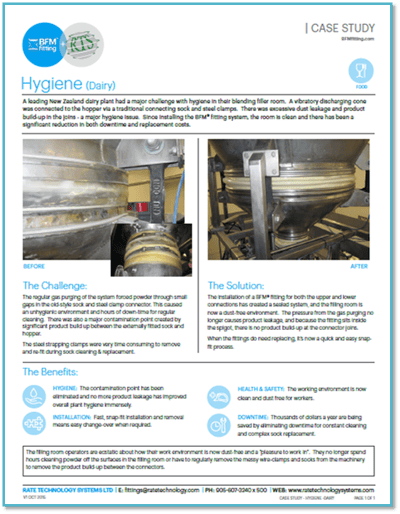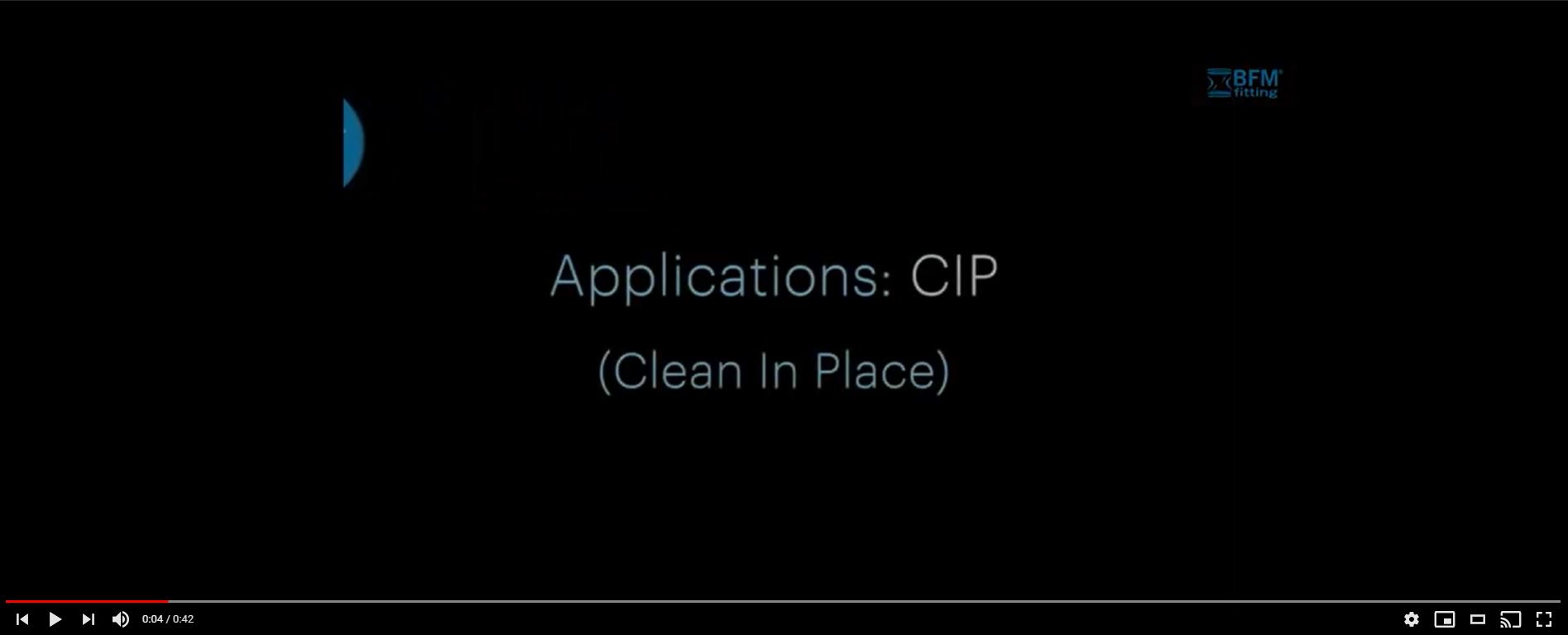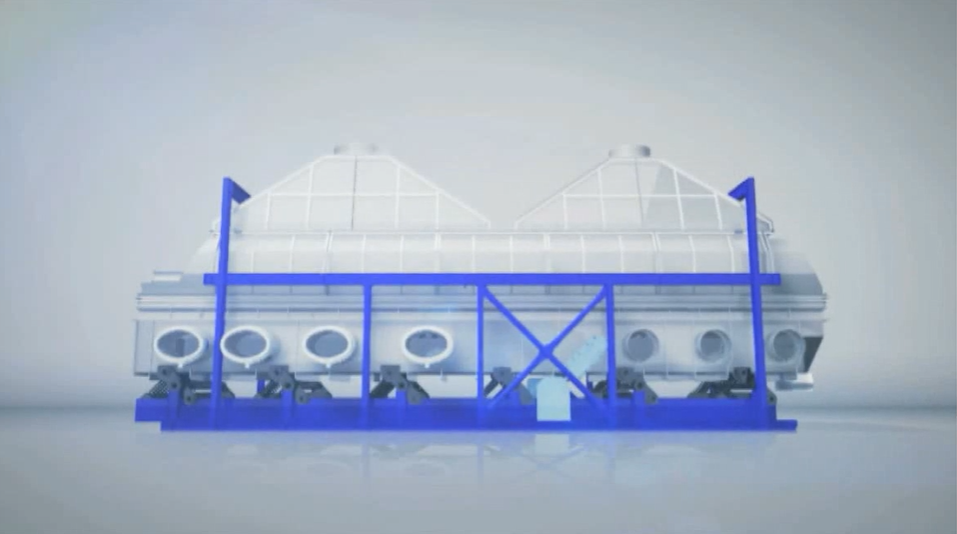DAIRY PROCESS
Dairy Plants are required to be of the highest sanitary standards
Canadian dairy standards are considered to be among the highest in the world. Canadian dairy producers are committed to delivering quality products while adhering to the highest standards for hygiene and safety. That means an exacting attention to detail along each and every step of the dairy process.
Rate Technology provides equipment and expertise to support every process step. From storage to packaging, we represent first-class leaders in manufacturing equipment and supplies.
Let us show where - and how - our extensive dairy production process expertise can help.

Dairy Plant fittings require continual cleaning.
Dairy plants are required to be of the highest sanitary standards, with a need for continual cleaning, such as CIP (Clean in Place). They are also environments that need to be free from dust, with the risk of dust explosions.
The BFM® fitting is the perfect solution. As well as offering a component that is more abrasion-resistant than traditional connectors, the BFM® connector is easily replaced (less downtime), easily cleaned, and 100% dust-tight (eliminating plant contamination).
BFM® fittings "fit" into every stage of the dairy process from storage to packaging. Ask us how they can help you achieve the highest possible hygiene in your dairy environment.
Dairy Plants depend on pneumatic conveying technologies
Pneumatic conveying has fewer moving parts and greater flexibility for plants with changing needs. Enclosed pipelines protect the material from contamination and virtually eliminate degradation of the product into smaller particles that can present a dust hazard. Pneumatic conveying also integrates filtration while delivering materials to their destination.
Dairy plants use Fluid Bed Dryers to dry and cool bulk materials
Drying and cooling are elementary steps in the processing of bulk materials. Additionally to ensuring stable quality of the finished product, a high availability of drying plants and good economical operation is much sought after.
Dairy Plants achieve sanitary processes with Rotary Valves
Dairy plants commonly use Rotary valves in their process in order to meter product flow through a system, as well as lock out any system air from further downstream process. The dairy sector relies on hygienic and cleanability features . We have a clean in place design as well as a 3A compliant GHA Rotary valve.
Dairy Plants require Dust Collection
Processing and powder handling operations, such as (big) bag handling, mixing and blending, feeding, dosing, conveying, drying, size reduction, and bulk storage create dangerous dusts that can become airborne, endanger air quality and pose fire and explosion hazards.
Dairy Plants use Air Classifier Mills for ultra-fine and controlled particle size grinding
Air Classifier Mills incorporates an internal air-classifying wheel with an independent drive giving precise control over “particle cut point” selection. Suitable for batch processing or continuous operation. This range of mills serves all industries producing fine powders where control of grinding temperature and particle size distribution are of primary importance.
Dairy Plants effectively process with Gate & Diverter Valves
Our gates and diverter valves are relied upon by the dairy sector because of our hygienic options and cleanability. All of our valves have food grade product contact parts. We even have a quick clean model that meets 3A standards for even higher hygiene standards. Take a look below for more on our dairy capabilities.
Dairy Plant fittings require continual cleaning
Dairy plants are required to be of the highest sanitary standards, with a need for continual cleaning, such as CIP (Clean in Place). They are also environments that need to be free from dust, with the risk of dust explosions.
The BFM® fitting is the perfect solution. As well as offering a component that is more abrasion-resistant than traditional connectors, the BFM® connector is easily replaced (less downtime), easily cleaned, and 100% dust-tight (eliminating plant contamination).
Dairy Plants need to sieve materials
Dairy processors rely on precision sifting equipment for their various recipe formulations. Centrifugal sifters classify the size of material by sifting and separating out material that isn’t to the required size. This screening process also removes unwanted material and de-risks the process from accepting contaminants such as plasters, insects, metals etc.
Dairy Plants rely on Bulk Bag Fillers, Loaders and Dischargers for their powder applications.
Many Dairy ingredients are handled in super sacs or bulk bags. This is because these systems typically handle up to 1 ton of material per bag.
Dairy Hygiene Improved with BFM fittings
A leading New Zealand dairy plant had a major challenge with hygiene in their blending filler room.
A vibratory discharging cone was connected to the hopper via a traditional connecting sock and steel clamps. There was excessive dust leakage and product build-up in the joins – a major hygiene issue.
Since installing the BFM® fitting system, the filling room operators are ecstatic about how their work environment is now dust-free and a “pleasure to work in”.
They no longer spend hours cleaning powder off the surfaces in the filling room or have to regularly remove the messy wire-clamps and socks from the machinery to remove the product build-up between the connectors.












